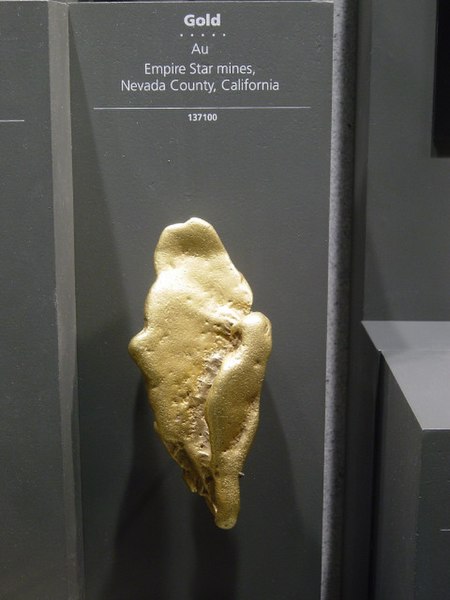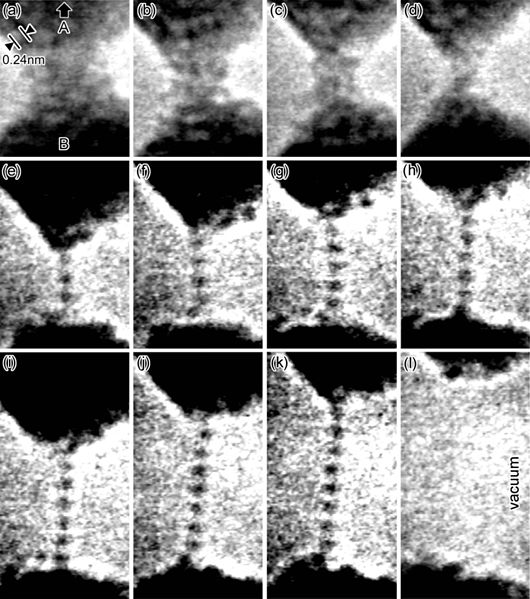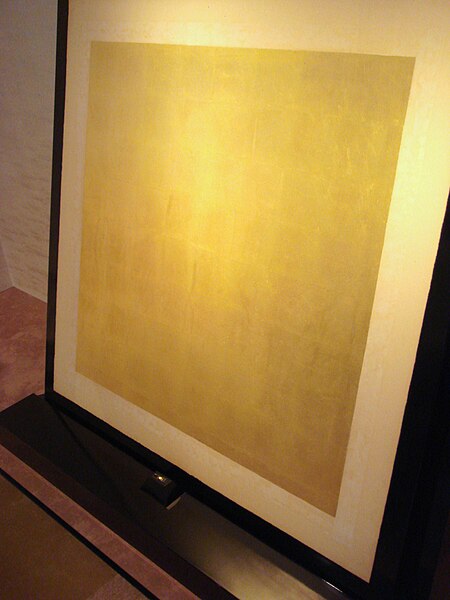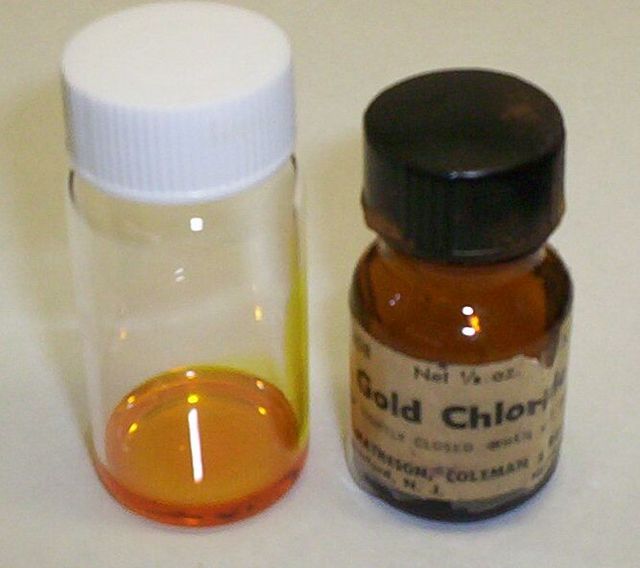A gold nugget is a naturally occurring piece of native gold. Watercourses often concentrate nuggets and finer gold in placers. Nuggets are recovered by placer mining, but they are also found in residual deposits where the gold-bearing veins or lodes are weathered. Nuggets are also found in the tailings piles of previous mining operations, especially those left by gold mining dredges.
Alaskan gold grains
A large gold nugget from Nevada County, California
A large gold nugget from the Kuskokwim Mountains of central Alaska. 6.6 x 2.0 x 1.1 cm. Weight 77 grams
Gold is a chemical element with the symbol Au and the atomic number 79. In its pure form, it is a bright, slightly orange-yellow, dense, soft, malleable, and ductile metal. Chemically, gold is a transition metal, a group 11 element, and one of the noble metals. It is one of the least reactive chemical elements, being the second-lowest in the reactivity series. It is solid under standard conditions.
Gold
Gold can be drawn into a monatomic wire, and then stretched more before it breaks.
A gold nugget of 5 mm (0.20 in) in size can be hammered into a gold foil of about 0.5 m2 (5.4 sq ft) in area.
Gold(III) chloride solution in water







